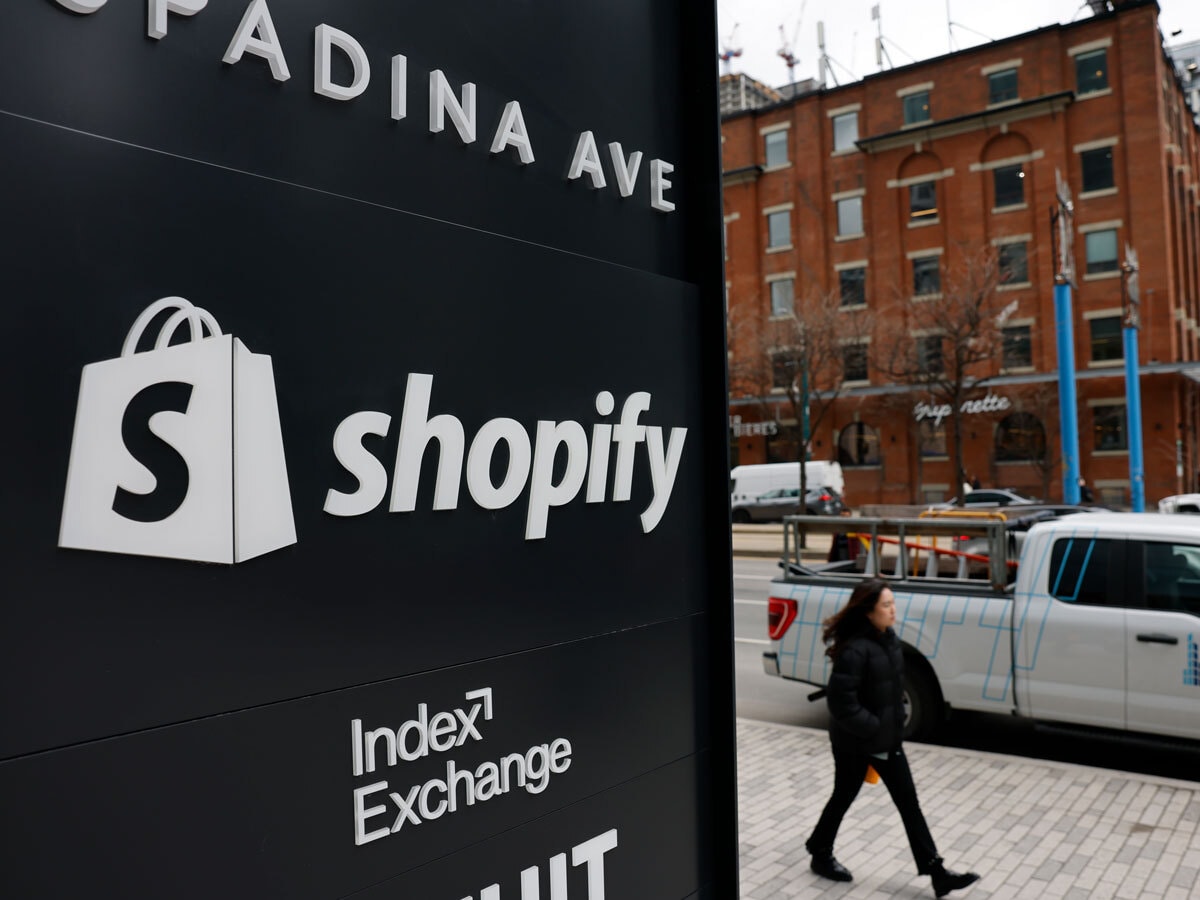The Shopify share price was buoyed by strong results throughout 2023. Despite its Q1 guidance disappointing investors in February, the e-commerce platform is well-placed to grow its merchant base thanks to a suite of artificial intelligence (AI) tools that give it a competitive edge.
Shopify [SHOP] rolled out dozens of new features earlier this year, including an AI-powered media editor that can enhance product images and semantic search; understand buying behaviours; and allow users to enter more intuitive search queries.
This isn’t Shopify’s first foray into AI, however.
“We cannot talk about 2023 without mentioning AI,” said President Harley Finkelstein on the Q4 earnings call in February. Last July, for instance, the company added Sidekick to Shopify Magic, its range of AI tools. Sidekick is an AI assistant that’s embedded as a button on Shopify and can respond to any queries merchants might have, including on sales trends.
Despite Shopify’s AI push, ‘super investor’ interest in the stock was fairly low in Q4 2023. While seven major investors bought $102.3m worth of Shopify shares, five sold $151.4m worth.
Two also sold $331.1m worth in Q1 2024, according to the most recent 13Fs: Cathie Wood cut her stake by 23.6% in the first three months of the year, selling 1.42 million shares, while Baillie Gifford trimmed its holding by 4.3%, offloading 2.78 million shares.
Shopify Reports Record Figures in 2023
In Q4 2023, Shopify’s gross merchandise volume grew by 23% to $75.1bn, while revenue rose 24% to $2.1bn, the first time quarterly sales had surpassed the $2bn mark. Excluding Shopify’s logistics business, the revenue growth rate was 30%, marking the fifth quarter in a row growth had exceeded 25%. Profit was $0.34 per share, up from just $0.07 per share in the year-ago period.
The strong quarter was boosted by a record Black Friday–Cyber Monday holiday period, during which merchants sold $9.3bn worth of products, with 55,000 reporting their highest-selling day ever.
Shopify’s Chief Financial Officer Jeff Hoffmeister said the company aims to deliver “a compelling mix of growth and profitability” this year.
“As we look ahead to 2024, our focus remains on driving innovation in an ever-evolving commerce landscape, delivering products that will propel our merchants’ businesses forward,” commented Finkelstein in the earnings press release.
All Eyes on AI’s Q1 Impact
Shopify’s share price fell 13.4% on 13 February, the day it released its Q4 report, on the back of relatively weak guidance issued for Q1 2024. The company has called for year-over-year revenue growth to be in the low-20s on a GAAP basis and in the mid- to high-20s excluding the impact of its logistics business.
Free cashflow margin growth is forecast to be “in the high single digits”. Hoffmeister pointed out on the Q4 earnings call that Q1 has historically been the company’s lowest revenue quarter, which impacts its free cashflow margin.
Investors may be interested in hearing about how the AI plans are helping to increase its merchant base and boosting their sales.
According to Emily Amor, E-commerce Strategist and SEO Manager at Digital Darts, a self-described ‘Shopify optimisation agency’ based in Australia, the Magic suite of tools gives the company a competitive edge.
“They’re undoubtedly game-changers for many store owners. They help with shortcutting business operations, like reporting and inventory tracking. Many of these tasks fall into the ‘too time-consuming’ basket for bootstrapped and time-poor shop owners who are often operating without a marketing team or resources to support them,” Amor told OPTO.
AI Theme Should Drive the Shopify Share Price Higher
After hitting a 52-week high of $91.57 on 12 February, the day before Q4 results were reported, the Shopify share price closed the following day at $77.18, and was $77.37 as of the close on 6 May. The stock is up 20.2% in the past year and down 0.7% year-to-date.
Other than holding Shopify shares outright, another way to gain exposure to the stock is through thematic ETFs.
The Global X E-commerce ETF [EBIZ] has allocated Shopify 3.1% of its portfolio as of 3 May. The fund is up 42.6% in the past year and up 17.4% year-to-date.
The ROBO Global Artificial Intelligence ETF [THNQ] has allocated Shopify 1.8% of its portfolio. The fund is up 24.2% in the past year and up 10.1% year-to-date.
Disclaimer Past performance is not a reliable indicator of future results.
CMC Markets is an execution-only service provider. The material (whether or not it states any opinions) is for general information purposes only, and does not take into account your personal circumstances or objectives. Nothing in this material is (or should be considered to be) financial, investment or other advice on which reliance should be placed. No opinion given in the material constitutes a recommendation by CMC Markets or the author that any particular investment, security, transaction or investment strategy is suitable for any specific person.
The material has not been prepared in accordance with legal requirements designed to promote the independence of investment research. Although we are not specifically prevented from dealing before providing this material, we do not seek to take advantage of the material prior to its dissemination.
CMC Markets does not endorse or offer opinion on the trading strategies used by the author. Their trading strategies do not guarantee any return and CMC Markets shall not be held responsible for any loss that you may incur, either directly or indirectly, arising from any investment based on any information contained herein.
*Tax treatment depends on individual circumstances and can change or may differ in a jurisdiction other than the UK.
Continue reading for FREE
- Includes free newsletter updates, unsubscribe anytime. Privacy policy





